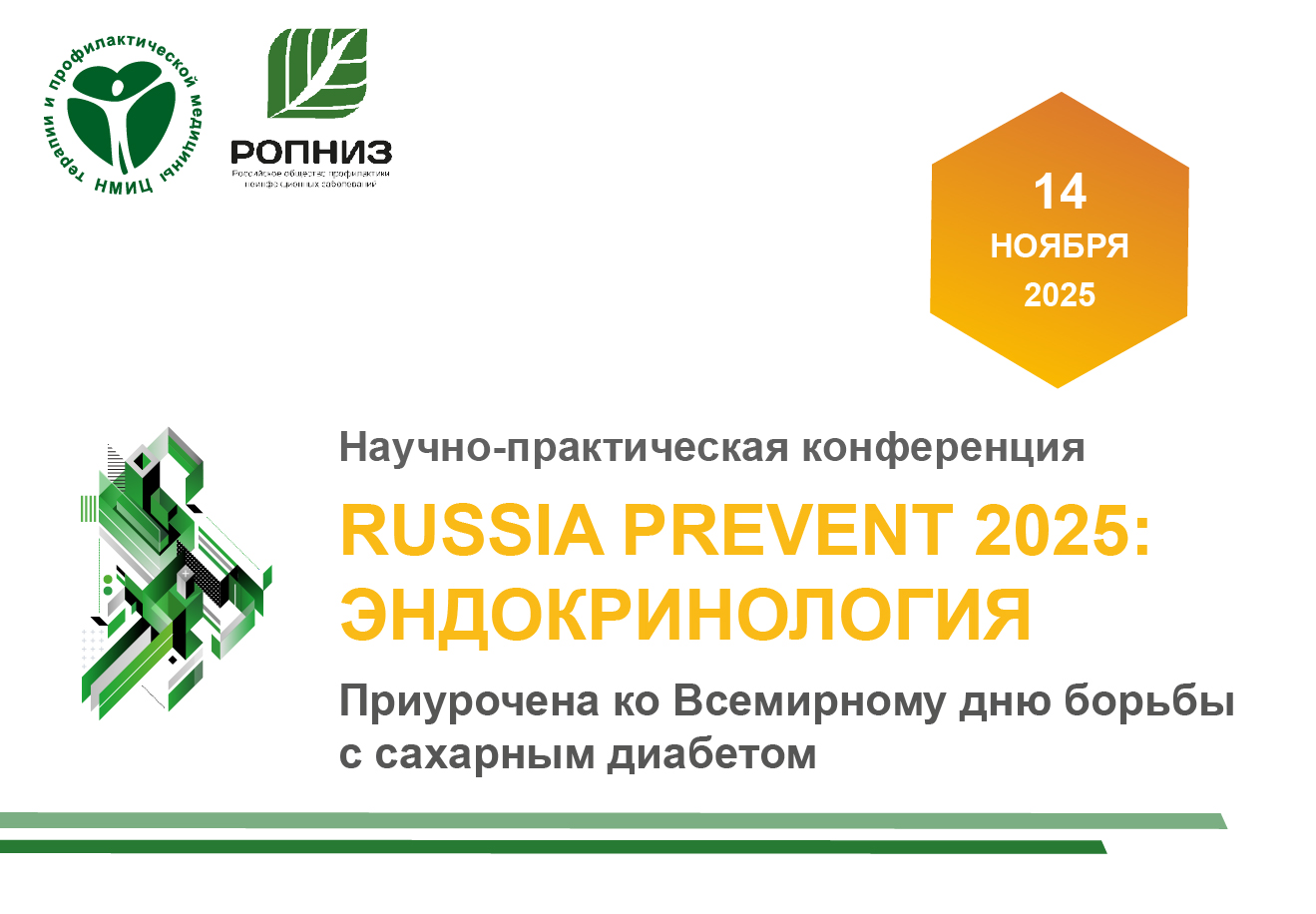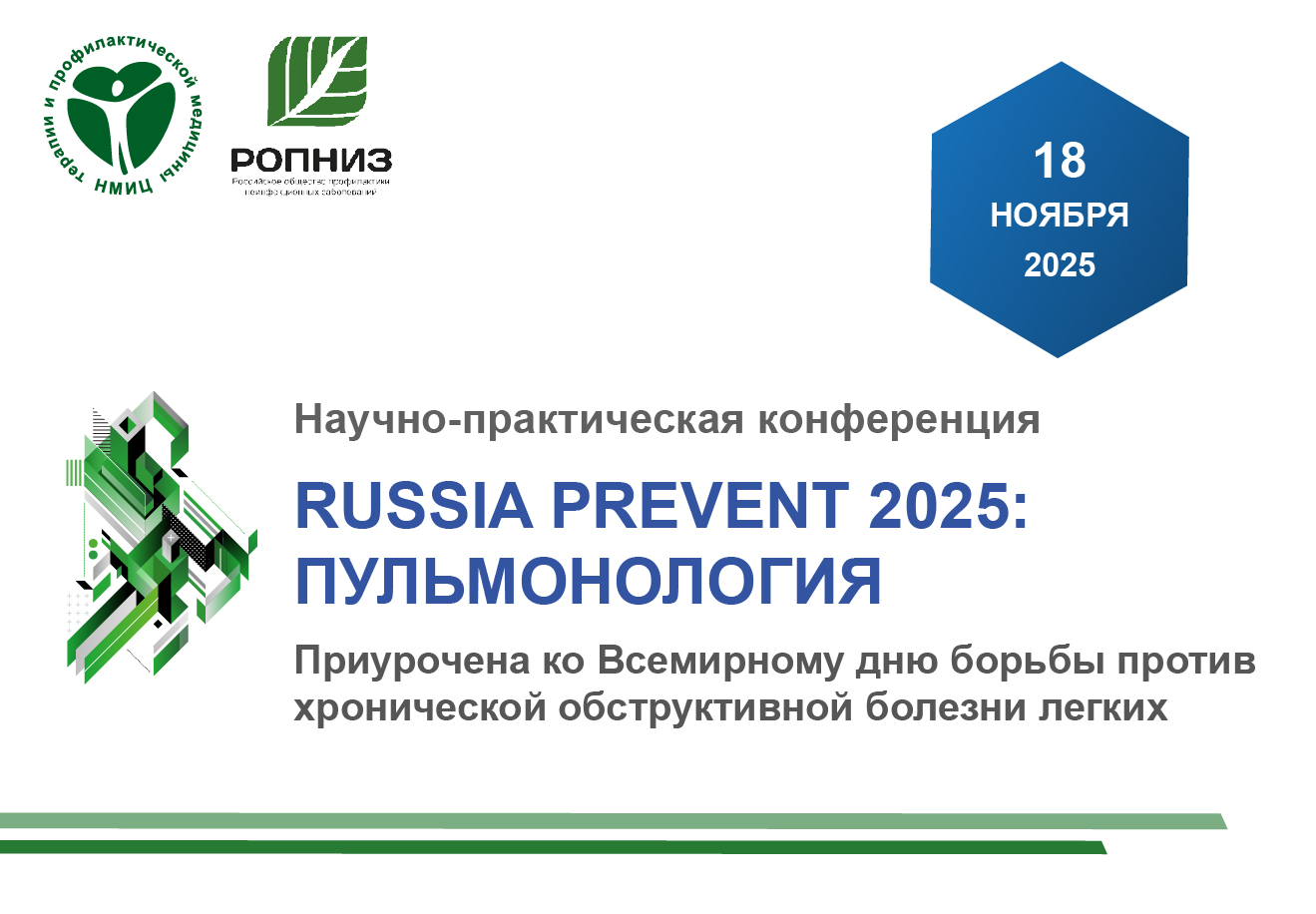Current hypertension treatment possibilities and tactics in patients with comorbidities. The role of selective imidazoline receptor agonists. Expert opinion
https://doi.org/10.15829/1728-8800-2025-4609
EDN: GCPTWX
Abstract
Hypertension (HTN) is a serious public health problem. Despite advances in diagnosis and public awareness, the percentage of controlled cases remains low, especially among men and the elderly. The main challenges are related to comorbidities such as obesity, diabetes, chronic kidney disease, and obstructive sleep apnea, which worsen the prognosis and increase the risk of cardiovascular events.
The approach to HTN treatment should be individualized and take into account specific disease phenotypes and comorbidities. It is important to identify patients with increased sympathetic nervous system activity, as this group experiences the greatest difficulties in blood pressure control. Moxonidine, a centrally acting agent, selectively stimulates imidazoline receptors in the brain, causing a decrease in sympathetic activity and effective reduction in blood pressure.
The need for a personalized approach to HTN therapy is driven by the growing number of patients with multiple comorbidities and complex pathogenesis. New approaches, including early initiation of combination therapy and targeted management of metabolic risk factors, will reduce cardiovascular morbidity and mortality. Moxonidine plays a key role within antihypertensive medications due to its unique mechanism of action and ability to positively impact a wide range of HTN-related pathologies
About the Authors
T. V. PecherinaRussian Federation
Academician L. S. Barbarash boulevard, building 6, Kemerovo, 650002
G. A. Chumakova
Russian Federation
Lenin Avenue, 40, Barnaul, Altai Territory, 656038
Yu. I. Grinshtein
Russian Federation
Partizan Zheleznyak St., 1, Krasnoyarsk, Krasnoyarsk Territory, 660022
O. Yu. Donirova
Russian Federation
Pavlova St., 12, Ulan-Ude, Republic of Buryatia, 670031
N. V. Zakharchuk
Russian Federation
Ostryakova Avenue, 2, Vladivostok, Primorsky Krai, 690002
V. V. Kashtalap
Russian Federation
Academician L. S. Barbarash boulevard, building 6, Kemerovo, 650002;
Voroshilova St., 22A, Kemerovo, 650070
T. A. Petrichko
Russian Federation
Krasnodarskaya St., 9, Khabarovsk, 680009
L. I. Syromyatnikova
Russian Federation
Petropavlovsk St., 26, Perm, 614000
O. V. Fedorishina
Russian Federation
Yubileyny microdistrict, 100, Irkutsk, 664049
S. М. Cherepenin
Russian Federation
Vorovskiy St., 70, Chelyabinsk, 454000
References
1. Balanova YuA, Drapkina OM, Kutsenko VA, et al. Hypertension in the Russian population during the COVID19 pandemic: sex differences in prevalence, treatment and its effectiveness. Data from the ESSERF3 study. Cardiovascular Therapy and Prevention. 2023;22(8S):3785. (In Russ.) doi:10.15829/1728880020233785. EDN: YRUNUX.
2. Balanova YuA, Shalnova SA, Imaeva AE, et al. Prevalence, Awareness, Treatment and Control of Hypertension In Russian Federation (Data of Observational ESSERF2 Study). Rational Pharmacotherapy in Cardiology. 2019;15(4):45066. (In Russ.) doi:10.20996/181964462019154450466.
3. Badin YuV, Fomin IV, Belenkov YuN, et al. EPOCHAAH 1998– 2017. Dynamics of prevalence, awareness of arterial hypertension, treatment coverage, and effective control of blood pressure in the European part of the Russian Federation. Kardiologiia. 2019;59(1S):3442. (In Russ.)doi:10.18087/cardio.2445.
4. Schutte AE, Jafar TH, Poulter NR, et al. Addressing global disparities in blood pressure control: perspectives of the International Society of Hypertension. Cardiovasc Res. 2023;119(2): 381409. doi:10.1093/cvr/cvac130.
5. Rotar OP, Ilyanova IN, Boyarinova MA, et al. 2023 AllRussian screening for hypertension: results. Russian Journal of Cardiology. 2024;29(5):5931. (In Russ.) Ротарь О. П., Ильянова И. Н., Бояринова М. А. и др. Результаты Всероссийского скрининга артериальной гипертензии 2023. Российский кардиологический журнал. 2024;29(5):5931. doi:10.15829/1560407120245931. EDN: EMCJRB.
6. Ignatova YuS, Bryukhanov YaI, Pecherina TB, Barbarash OL. Challenges in managing adherence in patients with cardiovascular disease (review). Sibirskij nauchnyj medicinskij zhurnal = Siberian Scientific Medical Journal. 2024;44(6):4856. (In Russ.) doi:10.18699/SSMJ20240605.
7. Matskeplishvili S, Kontsevaya A. Cardiovascular Health, Disease, and Care In Russia. Circulation. 2021;144(8):5868. doi:10.1161/CIRCULATIONAHA.121.055239.
8. Unger T, Borghi C, Charchar F, et al. 2020 International Society of Hypertension Global Hypertension Practice Guidelines. Hypertension. 2020;75(6):133457. doi:10.1161/HYPERTENSIONAHA.120.15026.
9. Rodionov AV, Granados D, Kontsevaya AV. Differing treatment pathways for the management of hypertension: longterm clinical projections In Russia. Cardiovascular Therapy and Prevention. 2024;23(3):3328. (In Russ.) doi:10.15829/1728880020243328. EDN: WZDHOL.
10. Mancia G, Kreutz R, Brunström M, et al. 2023 ESH Guidelines for the management of arterial hypertension The Task Force for the management of arterial hypertension of the European Society of Hypertension. J Hypertens. 2023;41(12):18742071. doi:10.1097/HJH.0000000000003480.
11. McCarthy CP, Bruno RM, Rahimi K, et al. What Is New and Different in the 2024 European Society of Cardiology Guidelines for the Management of Elevated Blood Pressure and Hypertension? Hypertension. 2025;82(3):43244. doi:10.1161/HYPERTENSIONAHA.124.24173.
12. Cohen JB. What Is New in the ESC Hypertension Guideline? Hypertension. 2025;82(1):113. doi:10.1161/HYPERTENSIONAHA.124.23724.
13. Kobalava ZhD, Konradi AO, Nedogoda SV, et al. 2024 Clinical practice guidelines for Hypertension in adults. Russian Journal of Cardiology. 2024;29(9):6117. (In Russ.) doi:10.15829/1560407120246117. EDN: GUEWLU.
14. Kronish IM, Hughes C, Quispe K, Viera AJ. Implementing Ambulatory Blood Pressure Monitoring in Primary Care Practice. Fam Pract Manag. 2020;27(3):1925.
15. Araújo S, RouxinolDias A, MesquitaBastos J, et al. Ambulatory blood pressure monitoring profiles in a crosssectional analysis of a large database of normotensive and true or suspected hypertensive patients. Revista Portuguesa de Cardiologia. 2018;37(4):31927. doi:10.1016/j.repc.2017.07.009.
16. Gorostidi M, Sobrino J, Segura J, et al. Ambulatory blood pressure monitoring in hypertensive patients with high cardiovascular risk: a crosssectional analysis of a 20 000patient database in Spain. J Hypertens. 2007;25(5):97784. doi:10.1097/HJH.0b013e32809874a2.
17. Huang QF, Yang WY, Asayama K, et al. Ambulatory Blood Pressure Monitoring to Diagnose and Manage Hypertension. Hypertension. 2021;77(2):25464. doi:10.1161/HYPERTENSIONAHA.120.14591.
18. Ndumele CE, Rangaswami J, Chow SL, et al. CardiovascularKidneyMetabolic Health: A Presidential Advisory From the American Heart Association. Circulation. 2023;148(20):160635. doi:10.1161/CIR.0000000000001184.
19. McEvoy JW, McCarthy CP, Bruno RM, et al. 2024 ESC Guidelines for the management of elevated blood pressure and hypertension. Eur Heart J. 2024;45(38):39124018. doi:10.1093/eurheartj/ehae178.
20. Grassi G, Biffi A, Seravalle G, et al. Sympathetic nerve traffic overactivity in chronic kidney disease: a systematic review and metaanalysis. J Hypertens. 2021;39(3):40816. doi:10.1097/HJH.0000000000002661.
21. Shiina K. Obstructive sleep apnearelated hypertension: a review of the literature and clinical management strategy. Hypertension Research. 2024;47(11):308598. doi:10.1038/s4144002401852y.
22. Li S, Tan I, Atkins E, et al. The Pathophysiology, Prognosis and Treatment of Hypertension in Females from Pregnancy to Postmenopause: A Review. Curr Heart Fail Rep. 2024;21(4):32236. doi:10.1007/s1189702400672y.
23. Baranova EI, Katsap AA, Kolesnik OS, Lebedeva EV. Hypertension in periand postmenopausal women — pathophysiological mechanisms and approaches to treatment. Russian Journal of Cardiology. 2023;28(5):5439. (In Russ.) doi:10.15829/1560407120235439.
24. Chazova IE, Oshchepkova EV, Kirillova MU, Stenina MB. The risk of arterial hypertension in patients with cancer on the background of antitumor treatment. Consilium Medicum. 2016;18(1):1620. (In Russ.)
25. Kobalava ZhD, Shavarova EK. Arterial hypertension during therapy of oncological diseases with angiogenesis inhibitors: serious impediment or controlled reaction? Head and neck tumors (HNT). 2017;7(2):7080. doi:10.17650/222214682017727080.
26. Starodubtseva IA, Lesina VS, Kostina NE, Venderevskaya KV. Bronchial asthma and cardiovascular comorbidity: interconnections and approaches to therapy. Therapy. 2022;(5):626. (In Russ.) doi:10.18565/therapy.2022.5.6266.
27. Vedenskaya SS, Smolenskaya OG, Grachev VG, et al. Hemostasis parameters in patients with arterial hypertension, multifocal atherosclerosis and risk factors. Clinician (Goa). 2024;18(1):4958. doi:10.17650/181883382024181K707.
28. Schlaich MP, Tsioufis K, Taddei S, et al. Targeting the sympathetic nervous system with the selective imidazoline receptor agonist moxonidine for the management of hypertension: an international position statement. J Hypertens. 2024;42(12):202540. doi:10.1097/HJH.0000000000003769.
29. Wenzel RR, Spieker L, Qui S, et al. I1 Imidazoline Agonist Moxonidine Decreases Sympathetic Nerve Activity and Blood Pressure in Hypertensives. Hypertension. 1998;32(6):10227. doi:10.1161/01.HYP.32.6.1022.
30. Prichard BN, Graham BR. Effective antihypertensive therapy: blood pressure control with moxonidine. J Cardiovasc Pharmacol. 1996;27 Suppl 3:S3848.
31. Fenton C, Keating GM, LysengWilliamson KA. Moxonidine. Drugs. 2006;66(4):47796. doi:10.2165/0000349520066604000006.
32. Sanjuliani A, GenelhuFagundes V, Barroso S, et al. Effects of moxonidine on sympathetic activity, and metabolic and hemodynamic variables in obese hypertensive patients. Am J Hypertens. 2002;15(4):A51A52. doi:10.1016/S08957061(02)024032.
33. Skibitskiy VV, Gutova SR, Fendrikova AV, Skibitskiy AV. Antihypertensive and Vasoprotective Effects of Combined Pharmacotherapy in Patients with Arterial Hypertension and Prediabetes. Kardiologiia. 2020;60(4):107. (In Russ.) doi:10.18087/cardio.2020.4.n1112.
34. Chubenko ЕА, Belyaeva ОD, Bazhenova ЕА, et al. Pleiotropic effects of moxonidine. "Arterial’naya Gipertenziya" ("Arterial Hypertension"). 2010;16(4):3515. (In Russ.) doi:10.18705/1607419X2010164351355.
35. Haczynski J, Flasinski J, PrzewlockaKosmala M, Spring A. Effect of moxonidine on left ventricular hypertrophy in hypertensive patients. Journal of Clinical and Basic Cardiology. 2001;4(1):61.
36. Littlewood KJ, Greiner W, Baum D, Zoellner Y. Adjunctive treatment with moxonidine versus nitrendipine for hypertensive patients with advanced renal failure: a costeffectiveness analysis. BMC Nephrol. 2007;8(1):9. doi:10.1186/1471236989.
37. Krespi PG, Makris TK, Hatzizacharias AN, et al. Moxonidine Effect on Microalbuminuria, Thrombomodulin, and Plasminogen Activator Inhibitor1 Levels in Patients with Essential Hypertension. Cardiovasc Drugs Ther. 1998;12(5):4637. doi:10.1023/A:1007702132210.
38. Martynov AI, Ostroumova OD, Mamaev VI. The possibilities of moxonidine (physiotensis) in the treatment of arterial hypertension in elderly patients. Clinical gerontology. 2005:7783. (In Russ.)
39. Dudinskaya EN, Tkachyeva ON, Bazaeva EV, et al. New possibilities of using moxonidin for blood pressure control in female patients with osteopenia. Kardiologiia. 2018;58(S7):3645. (In Russ.) doi:10.18087/cardio.2508.
40. Nedogoda SV, Chumachek EV, Ledyaeva AA, et al. Nonfixed combination perindopril+moxonidine for angioprotection in hypertensive patients with metabolic syndrome. Kardiologiya i serdechnososudistaya khirurgiya. 2021;14(6):499504. (In Russ.) doi:10.17116/kardio202114061499.
41. Shorakae S, Lambert EA, Jona E, et al. Effect of Central Sympathoinhibition With Moxonidine on Sympathetic Nervous Activity in Polycystic Ovary Syndrome — A Randomized Controlled Trial. Front Physiol. 2018;9. doi:10.3389/fphys.2018.01486.
42. Baranova EI, Ionin V, Rotar OP. Personalized approach to the treatment of patients with arterial hypertension: focus on imidazoline receptor agonists. Opinion on the problem. Cardiovascular Therapy and Prevention. 2025;24(2):4342. (In Russ.) doi:10.15829/1728880020254342. EDN: LCNWNX.
43. Nedogoda SV, Chumachek EV, Ledyaeva AA, et al. Nonfixed combination perindopril+moxonidine for blood pressure control in hypertensive patients with metabolic syndrome. Kardiologiya i serdechnososudistaya khirurgiya. 2021;14(2):20814. (In Russ.) doi:10.17116/kardio202114021208.
44. Cohn JN, Pfeffer MA, Rouleau J, et al. Adverse mortality effect of central sympathetic inhibition with sustained‐release moxonidine in patients with heart failure (MOXCON). Eur J Heart Fail. 2003;5(5):65967. doi:10.1016/S13889842(03)001636.
45. Pocock S, Wilhelmsen L, Dickstein K, et al. The data monitoring experience in the MOXCON trial. Eur Heart J. 2004;25(22):19748. doi:10.1016/j.ehj.2004.09.015.
46. Shlyakhto EV, Konradi AO, Zvartau NE, et al. Influence on the autonomic cardiovascular system regulation in the treatment of hypertension, arrhythmias and heart failure. Russian Journal of Cardiology. 2022;27(9):5195. (In Russ.) doi:10.15829/1560407120225195. EDN: CEMLOW.
47. Swedberg K, Bristow MR, Cohn JN, et al. Effects of SustainedRelease Moxonidine, an Imidazoline Agonist, on Plasma Norepinephrine in Patients With Chronic Heart Failure. Circulation. 2002;105(15):1797803. doi:10.1161/01.CIR.0000014212.04920.62.
48. Pecherina TB, Karetnikova VN, Kashtalap VV, et al. New biological markers for a prognostic model for assessing the risk of cardiac fibrosis in patients with STsegment elevation myocardial infarction. Complex Issues of Cardiovascular Diseases. 2023;12(4):18899. (In Russ.) doi:10.17802/230612782023124188199.
49. Ignatova YuS, Shuster SU, Pecherina TB, Barbarash OL. Antifibrotic effects of sodiumglucose cotransporter 2 inhibitors in patients with heart failure. Russian Journal of Cardiology. 2024; 29(1):5580. (In Russ.) doi:10.15829/1560407120245580. EDN: USRZZV.
50. Skibitskiy VV, Fendrikova AV, Skibitskiy AV, et al. Original Moxonidine and Generics: Where is the Edge of Difference? Kardiologiia. 2024;64(8):2431. (In Russ.) doi:10.18087/cardio.2024.8.n2731.
51. Azizi M, Sharp ASP, Fisher NDL, et al. PatientLevel Pooled Analysis of Endovascular Ultrasound Renal Denervation or a Sham Procedure 6 Months After Medication Escalation: The RADIANCE Clinical Trial Program. Circulation. 2024;149(10):74759. doi:10.1161/CIRCULATIONAHA.123.066941.
Supplementary files
What is already known about the subject?
- The growing number of patients with multimorbidity and complex pathogenesis of hypertension (HTN) requires a personalized approach to treatment taking into account the etiology, clinical phenotype, and comorbidities.
What might this study add?
- The authors' consensus on personalized therapy for HTN in patients with comorbidities is substantiated. A new term, "acute blood pressure increase without target organ damage" or "uncontrolled hypertension," is proposed.
- Early initiation of combination therapy using an imidazoline receptor agonist (moxonidine), which improves a wide range of HTN-related pathologies, makes an important contribution to cardiovascular risk reduction.
Review
For citations:
Pecherina T.V., Chumakova G.A., Grinshtein Yu.I., Donirova O.Yu., Zakharchuk N.V., Kashtalap V.V., Petrichko T.A., Syromyatnikova L.I., Fedorishina O.V., Cherepenin S.М. Current hypertension treatment possibilities and tactics in patients with comorbidities. The role of selective imidazoline receptor agonists. Expert opinion. Cardiovascular Therapy and Prevention. 2025;24(9):4609. (In Russ.) https://doi.org/10.15829/1728-8800-2025-4609. EDN: GCPTWX

























































